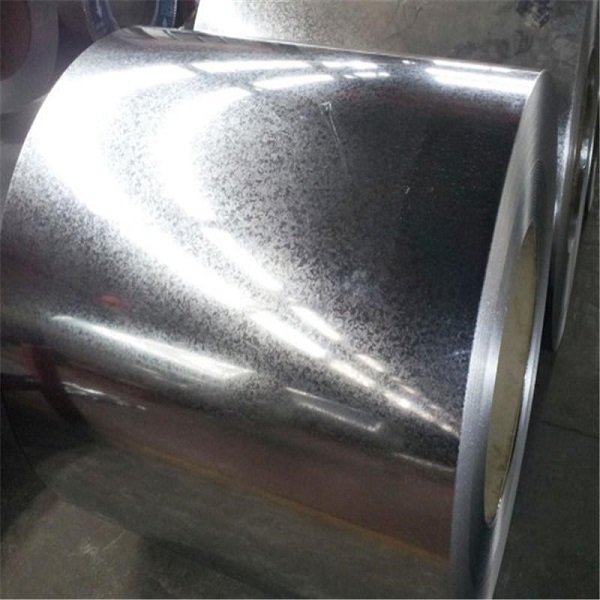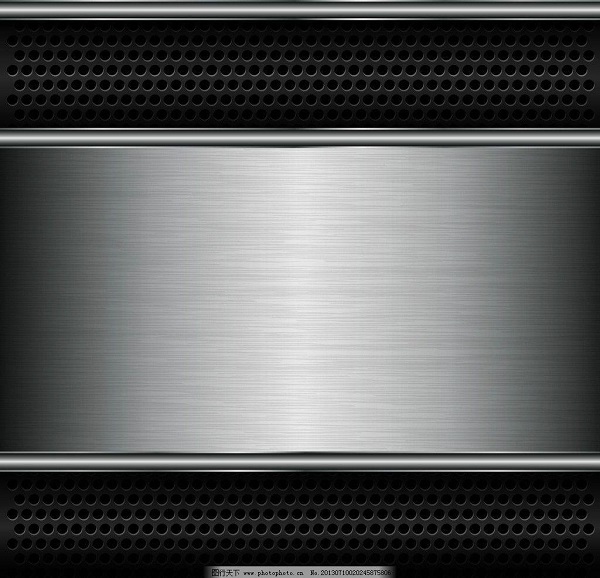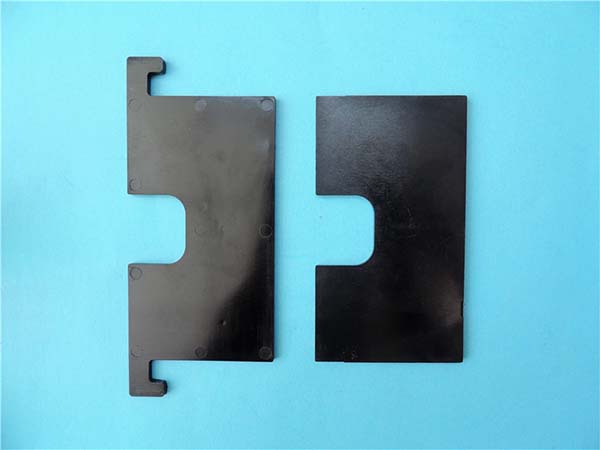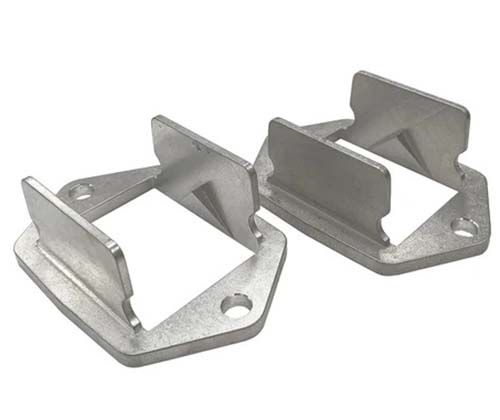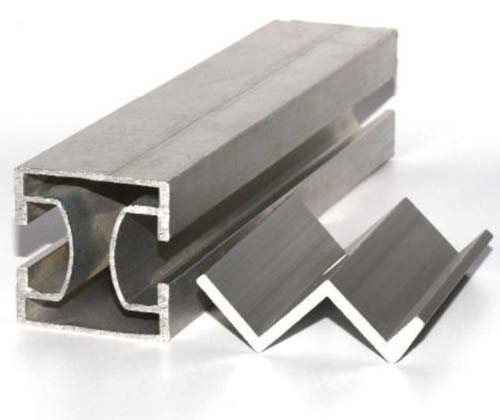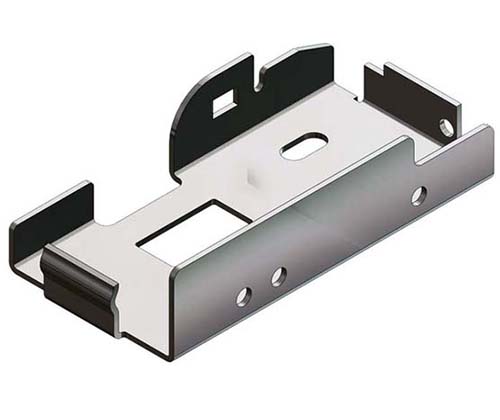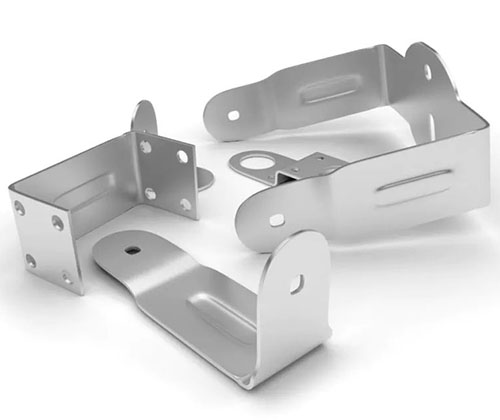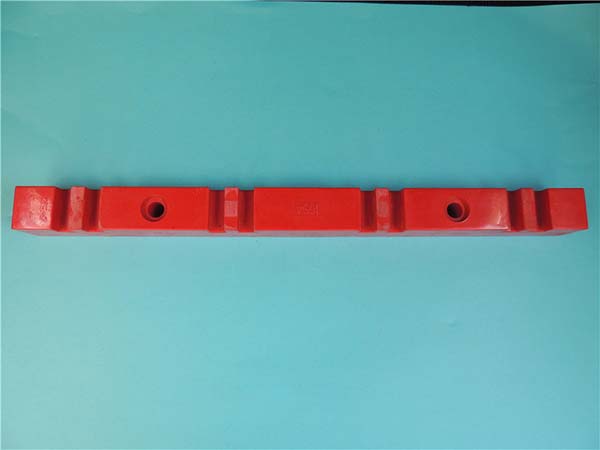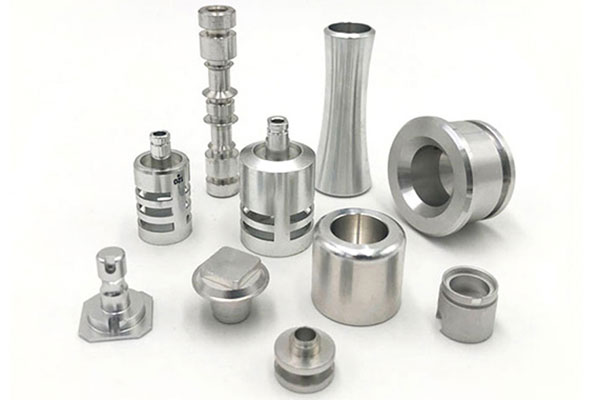1. Introduction
What exactly is magnetic sheet metal and why is it so crucial in various industries? Magnetic sheet metal, as the name implies, is sheet metal with magnetic properties. It plays a pivotal role in a wide range of industrial applications, making it an essential material in modern manufacturing and engineering.
In the electrical and electronics industry, magnetic sheet metal is used in the production of transformers, motors, and generators. For example, in a power transformer, the magnetic sheet metal core helps to efficiently transfer electrical energy by guiding the magnetic flux. This significantly improves the transformer's efficiency, reducing energy losses. In fact, according to industry research, transformers made with high - quality magnetic sheet metal can achieve energy efficiency levels of up to 98%, which is a remarkable improvement compared to those made with sub - standard materials.
In the automotive industry, magnetic sheet metal is used in components such as electric motors for hybrid and electric vehicles. These motors rely on the magnetic properties of the sheet metal to generate the necessary torque for vehicle propulsion. The use of magnetic sheet metal in automotive applications has also contributed to the reduction of vehicle weight, which in turn improves fuel efficiency. Studies have shown that a 10% reduction in vehicle weight can lead to a 6 - 8% improvement in fuel economy.
Given its importance, it's essential to have a comprehensive understanding of magnetic sheet metal, including its types, properties, applications, and how to choose the right one for specific needs. In the following sections, we will explore these aspects in detail to help you make informed decisions when dealing with magnetic sheet metal in your projects.
2. What is Magnetic Sheet Metal?
2.1 Definition
Magnetic sheet metal, also known as electrical steel or silicon steel, is a type of sheet - metal with high magnetic permeability. It is designed to efficiently conduct magnetic flux, which means it can easily be magnetized when placed in a magnetic field and also demagnetized when the magnetic field is removed. This property is crucial for its applications in electrical and electromagnetic devices. In simple terms, magnetic sheet metal acts as a "guide" for magnetic fields, allowing for the efficient transfer and control of magnetic energy. For example, in a transformer, the magnetic sheet metal core channels the magnetic flux generated by the primary coil, ensuring that it effectively induces an electric current in the secondary coil.
2.2 Composition and Structure
Magnetic sheet metal is typically an alloy mainly composed of iron (Fe) with the addition of other elements, most commonly silicon (Si). The silicon content usually ranges from 0.5% to 4.5%. The addition of silicon significantly improves the magnetic properties of the sheet metal. It increases the electrical resistivity of the material, which in turn reduces the eddy - current losses. Eddy currents are circular electric currents induced within conductors by a changing magnetic field. These currents can cause energy losses in the form of heat. By increasing the resistivity, the flow of eddy currents is restricted, enhancing the overall efficiency of the magnetic device.
The internal structure of magnetic sheet metal is crystalline. The grains in the crystal structure play a vital role in its magnetic performance. A well - oriented grain structure can lead to better magnetic properties. For instance, in grain - oriented magnetic sheet metal, the crystal grains are aligned in a specific direction. This alignment allows the magnetic flux to flow more easily along the preferred direction, resulting in a higher magnetic permeability and lower core losses compared to non - grain - oriented sheet metal. The manufacturing process of magnetic sheet metal often involves techniques such as cold rolling and annealing to control and optimize the grain structure for desired magnetic characteristics.
3. Properties of Magnetic Sheet Metal
3.1 Magnetic Properties
- Magnetic Permeability: This is a crucial magnetic property of magnetic sheet metal. High magnetic permeability means that the material can efficiently conduct magnetic flux. For example, in a transformer core made of magnetic sheet metal with a high permeability of around 5000 - 10000 (relative permeability, μr), the magnetic field lines can pass through the material with minimal resistance. This allows for a more efficient transfer of electrical energy in the transformer. In contrast, a material with low magnetic permeability would cause more magnetic flux leakage, reducing the overall efficiency of the electromagnetic device.
- Remanence (Residual Magnetism): Remanence is the magnetic flux density that remains in the material after the magnetic field has been removed. In applications such as permanent - magnet - assisted motors, a certain level of remanence is desirable. For instance, some magnetic sheet metals used in these motors may have a remanence value of 0.8 - 1.2 Tesla. This residual magnetism helps to maintain a magnetic field in the motor, contributing to its continuous operation and torque generation.
- Coercivity: Coercivity is the amount of magnetic field strength required to demagnetize a magnetized material. Magnetic sheet metals with low coercivity are preferred in applications where easy magnetization and demagnetization are necessary, like in AC motors. A low - coercivity magnetic sheet metal, with a coercivity value of around 10 - 50 A/m, can quickly respond to changes in the magnetic field, enabling the motor to operate smoothly at different frequencies.
3.2 Mechanical Properties
- Strength: The strength of magnetic sheet metal is important for its structural integrity during manufacturing and use. Tensile strength, for example, determines how much pulling force the sheet metal can withstand without breaking. High - strength magnetic sheet metals, with a tensile strength in the range of 300 - 600 MPa, are suitable for applications where the component needs to bear mechanical loads. In an electric motor housing made of magnetic sheet metal, the strength of the material ensures that it can protect the internal components from external mechanical stresses.
- Hardness: Hardness affects the wear resistance and machinability of magnetic sheet metal. A relatively hard magnetic sheet metal (with a Rockwell hardness of around B70 - B90) can resist surface wear during the operation of electromagnetic devices. However, if the hardness is too high, it may pose challenges during machining processes such as cutting and shaping.
- Ductility and Malleability: Ductility refers to the ability of the material to be drawn into wires, while malleability is the ability to be hammered or rolled into thin sheets. Magnetic sheet metals with good ductility and malleability can be easily formed into complex shapes required for various applications. For example, during the manufacturing of transformer cores, the malleability of the magnetic sheet metal allows it to be rolled into thin laminations, which are then stacked to form the core structure.
3.3 Electrical Properties
- Electrical Conductivity: Magnetic sheet metal, although mainly known for its magnetic properties, also has electrical conductivity. However, compared to pure conductors like copper (with an electrical conductivity of about 5.96×10^7 S/m), the electrical conductivity of magnetic sheet metal is relatively lower, typically in the range of 10^6 - 10^7 S/m. This conductivity is still sufficient for some electrical applications within the context of electromagnetic devices. For example, in a motor winding, the magnetic sheet metal can conduct the induced electrical currents to a certain extent.
- Magnetoresistive Effects: The magnetoresistive effect is an important electrical property related to the magnetic state of the sheet metal. In some magnetic sheet metals, a change in the magnetic field can cause a change in their electrical resistance. This property is utilized in sensors such as magnetoresistive sensors. For example, in a magnetic - field - sensing application, a small change in the external magnetic field can be detected by measuring the corresponding change in the electrical resistance of the magnetoresistive magnetic sheet metal sensor.
4. How to Choose the Right Magnetic Sheet Metal?
4.1 Consideration of Application Requirements
The first step in choosing the right magnetic sheet metal is to clearly define your application requirements.
If you are working on a high - frequency transformer for a power electronics device, you need magnetic sheet metal with extremely low core losses. High - frequency applications, typically above 10 kHz, demand materials with excellent magnetic properties at these frequencies. For example, amorphous magnetic sheet metals are often a great choice in such cases. They can have core losses as low as 0.1 - 0.2 W/kg at 100 kHz, which is significantly lower than some traditional grain - oriented magnetic sheet metals.
In a motor application, factors such as torque density and efficiency are crucial. A high - performance electric motor may require magnetic sheet metal with high magnetic permeability to increase the magnetic flux density in the air - gap, thereby generating more torque. Additionally, the mechanical properties of the sheet metal need to be considered. Since motors often experience mechanical vibrations during operation, the magnetic sheet metal should have sufficient strength to withstand these vibrations without deformation. For instance, in an industrial - grade electric motor, a magnetic sheet metal with a tensile strength of at least 400 MPa would be more suitable.
4.2 Evaluation of Material Quality
Once you have determined your application requirements, evaluating the quality of magnetic sheet metal is essential.
One of the key ways to assess quality is by checking the material's inspection reports. Reputable manufacturers will provide detailed reports that include information about the magnetic properties (such as magnetic permeability, remanence, and coercivity), chemical composition, and mechanical properties. For example, a reliable inspection report should clearly state the silicon content in the magnetic sheet metal, as this directly affects its magnetic and electrical properties.
Visual inspection is also important. The surface of the magnetic sheet metal should be smooth and free from defects such as scratches, cracks, or oxidation. Scratches can act as stress concentrators, reducing the mechanical strength of the sheet metal, while oxidation can degrade its magnetic and electrical performance. Additionally, check for any signs of warping or uneven thickness. Uneven thickness can lead to inconsistent magnetic properties across the sheet metal, which is undesirable in most applications.
5. Yigu Technology's View
As a non - standard plastic metal products custom Supplier, Yigu Technology has rich experience in handling magnetic sheet metal. We understand the unique requirements of different industries for magnetic sheet metal. Our professional team can provide comprehensive solutions, from the selection of high - quality magnetic sheet metal materials to the precision processing and shaping according to specific design drawings.
We have advanced processing equipment and strict quality control systems. This ensures that every magnetic sheet metal product we produce meets high - quality standards in terms of magnetic properties, mechanical properties, and dimensional accuracy. Whether you need small - batch custom - made magnetic sheet metal parts for prototypes or large - scale production for mass - market products, Yigu Technology is your reliable partner.
6. FAQ
6.1 What are the common types of magnetic sheet metal?
- Silicon Steel Sheets: Silicon steel, also known as electrical steel, is one of the most common types. It has a silicon content typically ranging from 0.5% - 4.5%. For example, low - silicon steel with about 0.5% - 1.5% silicon is often used in small - motor cores due to its relatively good magnetic properties and lower cost. High - silicon steel, with 3% - 4.5% silicon, is more suitable for transformer cores because of its extremely low core losses and high magnetic permeability.
- Permalloy: This is an iron - nickel alloy. In 1J79 permalloy, the nickel content is around 79%. It has an extremely high magnetic permeability, often reaching values over 100,000 in some cases. It is widely used in precision electronic devices such as high - frequency transformers, magnetic shielding devices, and sensitive magnetic sensors. For instance, in a high - end audio amplifier's power supply transformer, 1J79 permalloy can help reduce electromagnetic interference and improve the audio quality.
6.2 How to measure the magnetic properties of magnetic sheet metal?
Common methods and equipment for measuring the magnetic properties of magnetic sheet metal include:
- Hysteresis Loop Tracer: This device measures the relationship between magnetic field strength (H) and magnetic flux density (B) of the magnetic sheet metal, generating a hysteresis loop. By analyzing the loop, parameters such as magnetic permeability, remanence, and coercivity can be determined. For example, a high - precision hysteresis loop tracer can accurately measure the coercivity of a magnetic sheet metal sample with an error of less than 1 A/m.
- Vibrating Sample Magnetometer (VSM): In a VSM, the sample is vibrated within a magnetic field. The changing magnetic moment of the vibrating sample induces an electromotive force in the detection coil, which is used to calculate magnetic properties like magnetization and magnetic moment. It is suitable for measuring the magnetic properties of small - sized magnetic sheet metal samples with high precision.
6.3 Can magnetic sheet metal be welded?
Yes, magnetic sheet metal can be welded, but there are some points to note:
- Weldability: Most magnetic sheet metals are weldable, but the welding process may affect their magnetic properties to some extent. For example, during the welding of silicon steel sheets, the high - temperature heat input during welding can cause changes in the grain structure of the sheet metal, which may slightly reduce its magnetic permeability.
- Welding Precautions: When welding magnetic sheet metal, it is necessary to select the appropriate welding process and materials. TIG (Tungsten Inert Gas) welding is often a good choice for magnetic sheet metal as it provides better control over the heat input, reducing the impact on the magnetic properties. The welding materials should also be carefully selected to ensure good weld quality and minimize the adverse effects on the magnetic and mechanical properties of the magnetic sheet metal.
